For years, I’ve been curious about what it takes to create dense branching on wisteria bonsai. I’ve seen many beautiful specimens that bloom every year, but I don’t see as many that have fine, twiggy branching.
One of the first steps in ramifying deciduous bonsai is cutting back to create a compact silhouette. This can require cutting past existing buds, which isn’t always a sure thing with older trees.
Having pruned wisteria in the landscape for years, I know that I can cut into old wood and still get new shoots to develop. I wasn’t sure about what to expect with wisteria bonsai, so I decided to give it a try.
Here’s the tree I wanted to experiment with. It still had most of its leaves in December, so I removed them to get a better look at the silhouette.
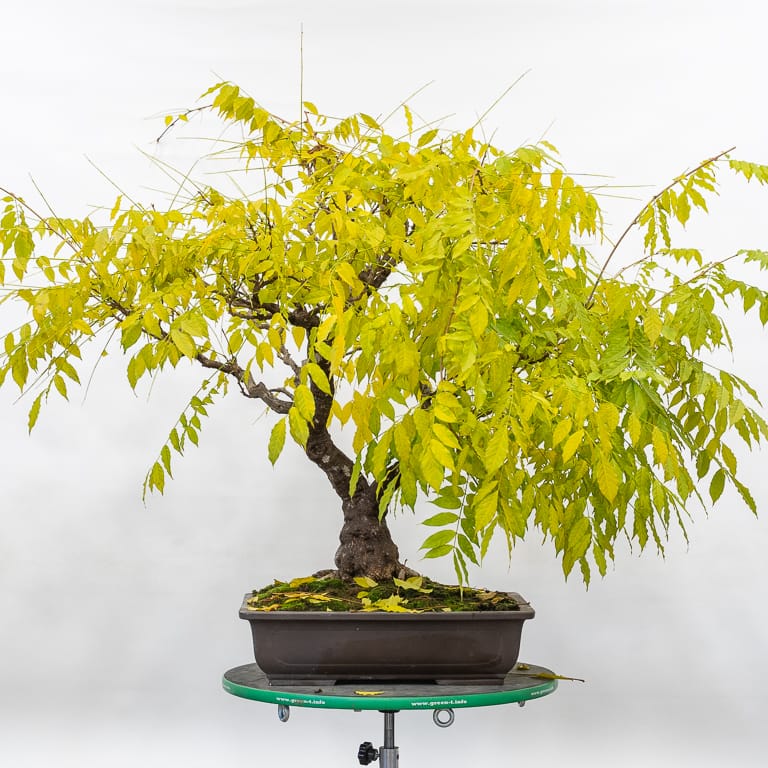
Fall color on Chinese wisteria
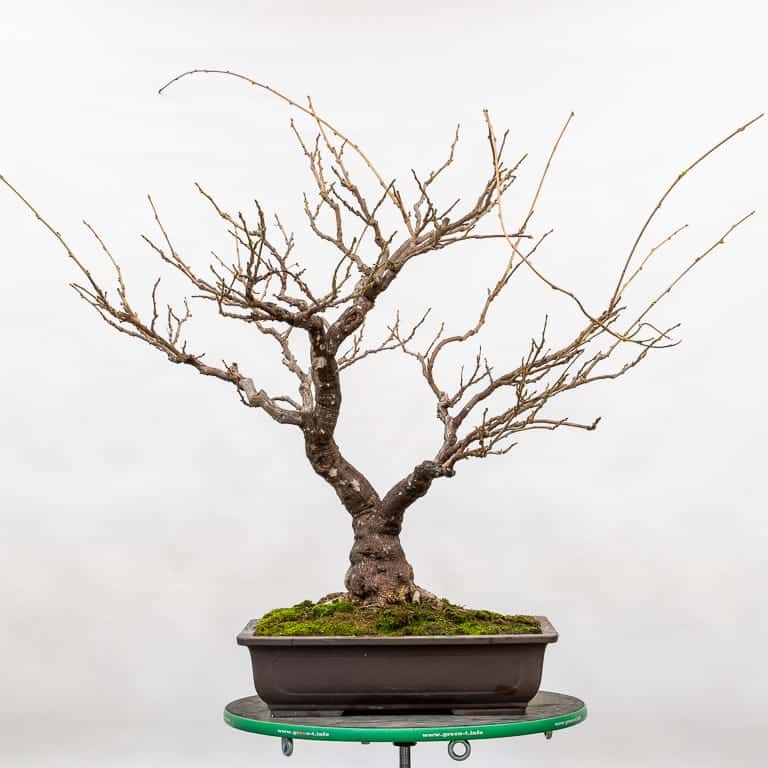
After removing the leaves
This was my first chance to see the branches clearly. I liked the primary branches, but some of the smaller branches were too long to support a compact silhouette.
I cut back to one or two visible buds on most of the branches, and in a few places, I cut past the buds to see what would happen. Here’s the tree after cutback.
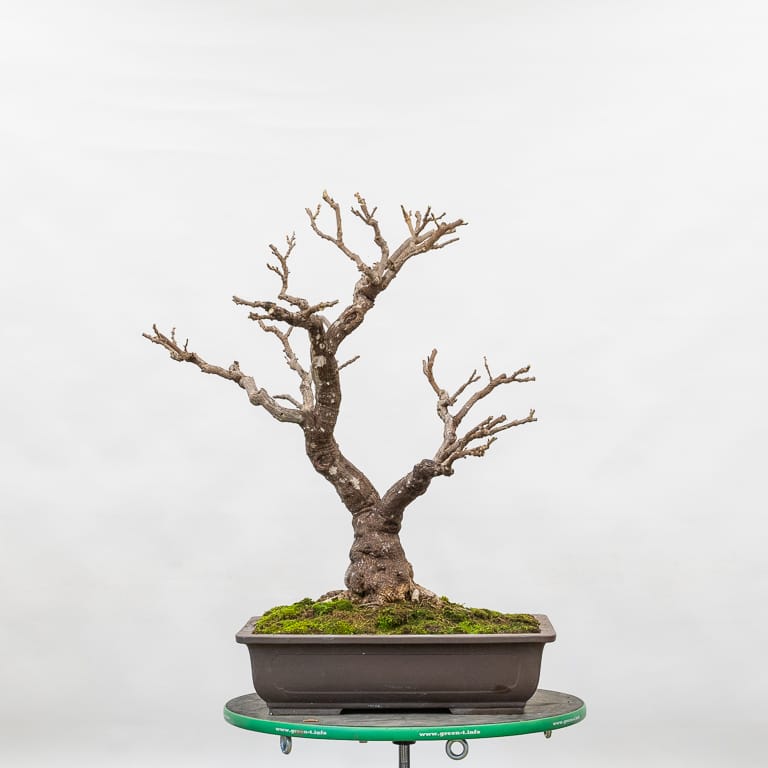
After cutback – December, 2019
Although it took several weeks for the tree to leaf out in spring, I was happy to see new shoots emerge from every branch. The tree has since filled in and is now producing long tendrils.
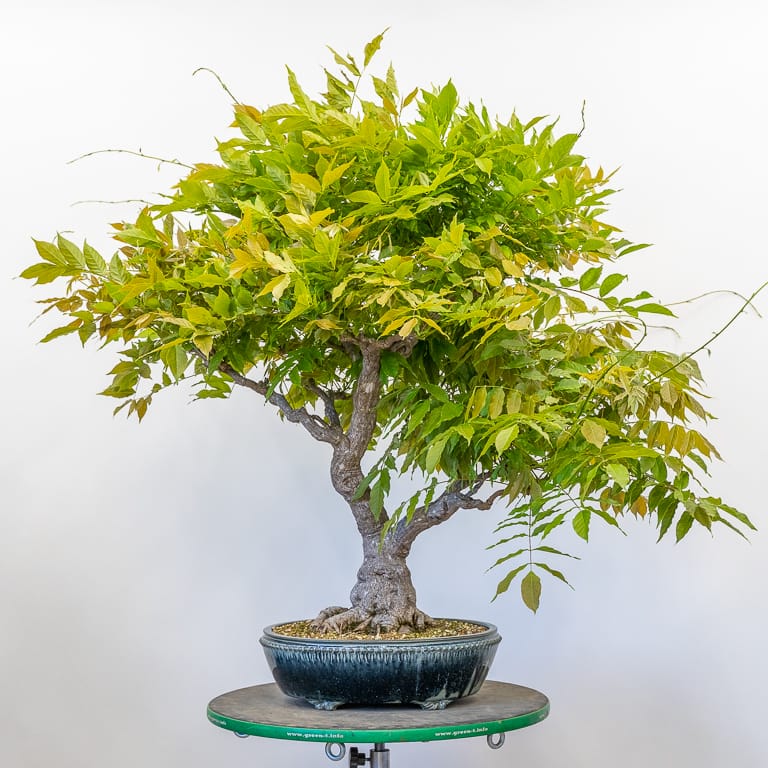
Wisteria with spring growth – 35″ tall
I’ll let the tree continue to grow until the leaves have hardened off before thinning the foliage in May or June.
For those who noticed the new pot, here’s a close-up.
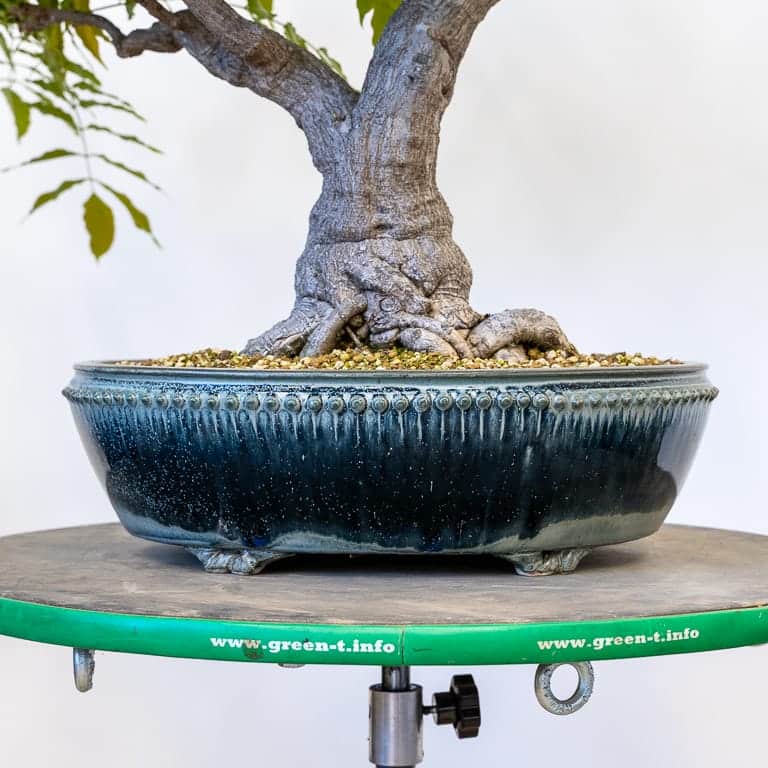
Glazed pot by Sara Rayner
